As a modifiable contributor to type 2 diabetes (T2D) pathophysiology, management of excess weight is integral to complete T2D care.1
Excess weight, and particularly excess abdominal fat, is associated with insulin resistance based on preclinical and clinical data in animal models.2-5


Adult body mass index (BMI) is a screening tool to identify adult overweight and obesity8:




Obesity is subdivided into categories:
Definitions of BMI categories can vary by ethnicity and geographic region. Please see the RESOURCE HUB FOR EXCESS WEIGHT IN T2D for more information.
- Class 1: BMI 30 kg/m2 to <35 kg/m2
- Class 2: BMI 35 kg/m2 to <40 kg/m2
- Class 3: BMI ≥40 kg/m2
Adapted from the Centers for Disease Control and Prevention (CDC).8
Assessing abdominal fat can help inform treatment decisions.1,9
- The American Diabetes Association (ADA) recognizes that in addition to weight and BMI, assessment of weight distribution (central/visceral adipose deposition) and weight gain pattern and trajectory can help inform risk stratification and treatment options.1
- The International Diabetes Federation (IDF) outlines adopting waist circumference as a measure for abdominal or central obesity, with different values for different ethnic groups.9
Among people with T2D, those who have higher BMI more often have inadequate glycemic control.10
To examine the relationship between BMI and glycemic control in people with T2D, a retrospective database study was conducted. The study evaluated 2012 to 2019 data from cohort samples of adults with T2D. Data shown below are from the 2019 cohort, based on a sample of 13,755.10*
Each increased BMI category was associated with a higher proportion of patients with uncontrolled A1C (≥7%).10
In this study, an A1C ≥7% was seen in:

*The study utilized data from IBM® MarketScan® Explorys® Claims-EMR Data 2012-2019 (n=44,723)11
According to the latest National Health and Nutrition
Examination Survey (NHANES) data on adults with diabetes (2015 - 2018)12*


Although this data set includes participants with both type 1 and type 2 diabetes, it likely reflects the population at large and would therefore represent >90% of patients with T2D.12
Associations of BMI with diabetes-related complications13
According to NHANES data among people with diabetes, when compared with participants who had a BMI of <30 kg/m2, participants with a BMI ≥30 kg/m2 were*:


*NHANES participants from 2015-2018 who were not pregnant, were ≥20 years of age, and reported having ever received a diagnosis of diabetes from a physician, aside from gestational diabetes (n=6653). Although this data set includes both type 1 and type 2 diabetes, it likely reflects the population at large and would therefore represent >90% of patients with type 2 diabetes.

Want to help people with T2D lose excess weight and try to keep it off?
LEARN MORE ABOUT BARRIERS TO WEIGHT MANAGEMENT IN T2D.
T2D=type 2 diabetes.
References
- American Diabetes Association Professional Practice Committee. 8. Obesity and weight management for the prevention and treatment of type 2 diabetes: standards of medical care in diabetes-2024. Diabetes Care. 2024;47(suppl 1):S145-157. doi:10.2337/dc24-S008.
- Trouwborst I, Bowser SM, Goossens GH, Blaak EE. Ectopic fat accumulation in distinct insulin resistant phenotypes; targets for personalized nutritional interventions. Front Nutr. 2018;5:77. doi:10.3389/fnut.2018.00077.
- Chait A, den Hartigh LJ. Adipose tissue distribution, inflammation and its metabolic consequences, including diabetes and cardiovascular disease. Front Cardiovasc Med. 2020;7:22. doi:10.3389/fcvm.2020.00022.
- de Luca C, Olefsky JM. Inflammation and insulin resistance. FEBS Lett. 2008;582(1):97-105. doi:10.1016/j.febslet.2007.11.057.
- Xu H, Barnes GT, Yang Q, et al. Chronic inflammation in fat plays a crucial role in the development of obesity-related insulin resistance. J Clin Invest. 2003;112(12):1821-1830. doi:10.1172/JCI19451.
- Kozawa J, Shimomura I. Ectopic fat accumulation in pancreas and heart. J Clin Med. 2021;10(6):1326. doi:10.3390/jcm10061326.
- Ye R, Onodera T, Scherer PE. Lipotoxicity and β cell maintenance in obesity and type 2 diabetes. J Endocr Soc. 2019;3(3):617-631. doi:10.1210/js.2018-00372.
- Centers for Disease Control and Prevention. Defining adult overweight & obesity. Updated June 3, 2022. Accessed February 1, 2024. https://www.cdc.gov/obesity/basics/adult-defining.html.
- Alberti KGMM, Eckel RH, Grundy SM, et al. Harmonizing the metabolic syndrome: a joint interim statement of the International Diabetes Federation Task Force on Epidemiology and Prevention; National Heart, Lung, and Blood Institute; American Heart Association; World Heart Federation; International Atherosclerosis Society; and International Association for the Study of Obesity. Circulation. 2009;120(16):1640-1645. doi:10.1161/CIRCULATIONAHA.109.192644.
- Boye KS, Lage MJ, Shinde S, Thieu V, Bae JP. Trends in HbA1c and body mass index among individuals with type 2 diabetes: evidence from a US database 2012-2019. Diabetes Ther. 2021;12(7):2077-2087. doi.org/10.1007/s13300-021-01084-0.
- Boye KS, Lage MJ, Thieu V, Shinde S, Dhamija S, Bae JP. Obesity and glycemic control among people with type 2 diabetes in the United States: a retrospective cohort study using insurance claims data. J Diabetes Complications. 2021;35(9):107975.
- Fang M, Wang D, Coresh J, Selvin E. Trends in diabetes treatment and control in U.S. adults, 1999–2018. N Engl J Med. 2021;384:2219-2228. doi:10.1056/NEJMsa2032271.
- Fang M, Selvin E. Thirty-year trends in complications in U.S. adults with newly diagnosed type 2 diabetes. Diabetes Care. 2021;44(3):699-706. doi:10.2337/dc20-2304.